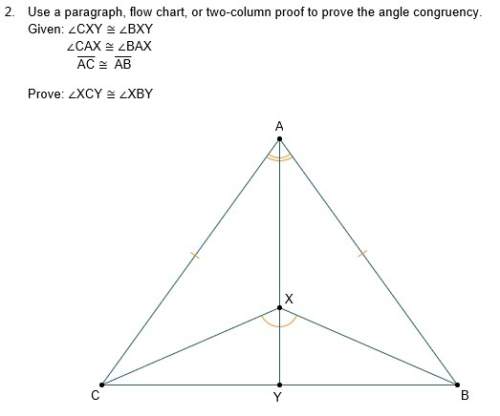
Mathematics, 22.10.2019 04:50 mandy9386
We’ve shown that matrix multiplication is generally not commutative, meaning that as a general rule for two
matrices a and b, a ⋅ b ≠ b ⋅ a. explain why f ⋅ g = g ⋅ f in each of the following examples.
a. f = 3
2 0
, g = 6
4 0
b. f =
1 3 2
3 1 2
4 3 2
, g =
0 0 0
0 0 0
0 0 0
c. f =
1 3 2
3 1 2
4 3 2
, g =
1 0 0
0 1 0
0 0 1
d. f =
1 3 2
3 1 2
4 3 2
, g =
3 0 0
0 3 0
0 0 3

Answers: 1


Another question on Mathematics

Mathematics, 21.06.2019 16:00
In the diagram, the ratio of ab to ae is (1/2) . what is the ratio of the length of to the length of ?
Answers: 3


Mathematics, 21.06.2019 19:30
Julian wrote the following numeric pattern on the board3,10,17,24,31,38.what numbers of julian's pattern are compound numbers.
Answers: 2

Mathematics, 21.06.2019 21:00
Estimate the area under the curve f(x) = 16 - x^2 from x = 0 to x = 3 by using three inscribed (under the curve) rectangles. answer to the nearest integer.
Answers: 1
You know the right answer?
We’ve shown that matrix multiplication is generally not commutative, meaning that as a general rule...
Questions






Physics, 23.10.2020 16:10

Chemistry, 23.10.2020 16:10

English, 23.10.2020 16:10

Chemistry, 23.10.2020 16:10

History, 23.10.2020 16:10

Social Studies, 23.10.2020 16:10

Mathematics, 23.10.2020 16:10

Biology, 23.10.2020 16:10

Biology, 23.10.2020 16:10

Mathematics, 23.10.2020 16:10


Mathematics, 23.10.2020 16:10



Mathematics, 23.10.2020 16:10

![G=\left[\begin{array}{ccc}2&6\\4&0\end{array}\right] =2\left[\begin{array}{ccc}1&3\\2&0\end{array}\right] =2F](/tpl/images/0340/1503/3f5d2.png)



![G=\left[\begin{array}{ccc}3&0&0\\0&3&0\\0&0&3\end{array}\right] =3\left[\begin{array}{ccc}1&0&0\\0&1&0\\0&0&1\end{array}\right] =3Id](/tpl/images/0340/1503/a848c.png) .
.



